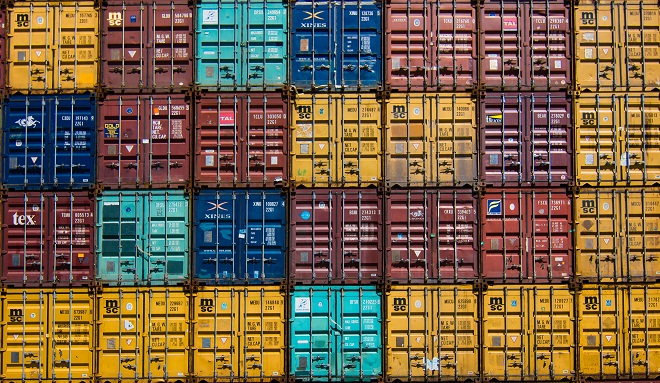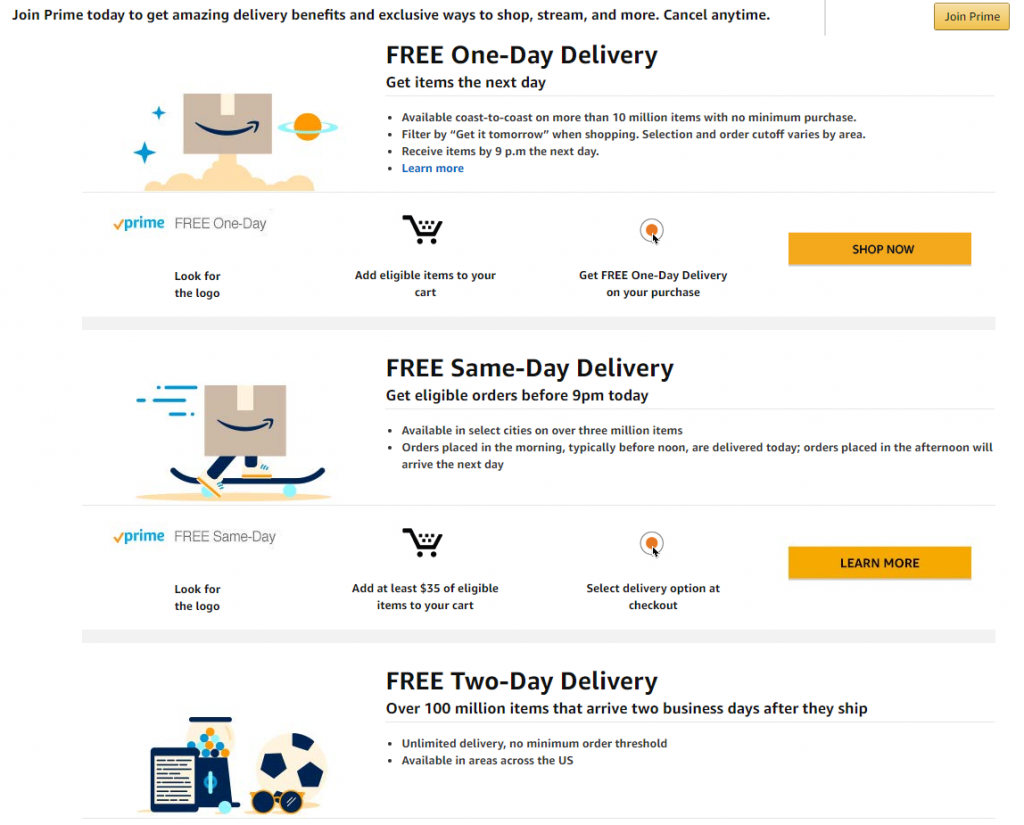
Ecommerce fulfillment 101
Running an eCommerce business seems easy until you have to think about all aspects of fulfillment – receiving, warehousing, packing, and shipping products to customers.
Customers are harder and harder to please. They may not be willing to pay extra but want fast delivery. It can be stressful for many companies to manage order fulfillment in an optimal way that satisfies their needs, meets customers’ demands and stimulates business growth.
In this article, we’ll cover the fundamentals of ecommerce fulfillment and how to choose a proper order fulfillment for your business.
What is eCommerce fulfillment?
Ecommerce fulfillment is the process where the merchant receives, packages, and ships orders for the goods to the buyers. It is an essential way for any eCommerce business to handle tons of orders that need to be fulfilled and delivered to end customers promptly. You can either outsource fulfillment or set it up in-house.
The order fulfillment process
1. Receiving
There are two ways for an ecommerce company to handle inventory. It can choose to receive inventory from suppliers or manufacturers and stock it in house. In case the company outsources the fulfillment, the providers will take care of inventory involving all related tasks. Outsourcing fulfillment comes with potential cost-savings.
2. Storing
If you choose to do fulfillment yourself, you will be responsible for a list of inventory tasks from taking stock, examining, labeling and managing inventory:
- Count all the items to make sure you receive what you ordered.
- Check the condition of the items for defects.
- Update the warehouse management software.
- Label the items properly with SKUs/barcodes.
- Pack some quantities to reduce shipping time.
After you have carefully checked the inventory and there are no problems, it’s time to put all the goods on the Warehouse Storage Rack Equipment or to the provided polymer shelving. It’s essential to store the inventory properly as it can affect all the operations of the order fulfillment.
Tip on warehouse organization: Keep the most popular and bestseller items in the central area of your warehouse or, better yet, close to the packaging station so that you can pick, pack, and ship the order in time. Keep employees safe by using the best rolling ladders when placing and transferring products.
3. Processing
The order processing phase begins when the party responsible for fulfillment receives the order placed by a customer.
Usually, the checkout on your store integrates with the warehouse management system. So when someone places an order on your website, that order will be automatically sent to the warehouse and get prepared for shipping.
4. Shipping
The faster you deliver orders to customers, the happier they are.
Unfortunately, Amazon pushes the limits of shipping to same-day delivery and unrealistic expectations grow. Statistics show that 38% of online shoppers will abandon their carts if delivery takes longer than a week. A survey from 2017 also revealed that roughly as many people shop for fast shipping as they do for low prices.
After completing the order processing, all processed items are transported to the shipping station of the carrier. The order gets sent out along with the invoice. Explore how AP automation can further streamline your business operations and unlock efficiency benefits at https://coreintegrator.com/ap-automation/benefits/.
Once the order has been shipped out, it’s vital to provide customers with current order status. After customers receive their orders and complete all payments, individual order requests will be marked as complete.
5. Handling returns
An ecommerce business is bound to get returns. Consumers now have more power in shopping than before. 95% of online customers will buy again from a merchant that provides a good return and exchange experience.
There are many ways to make your return work for your business and your customers. Follow a clear return policy and make sure your customers know it. The return policy should be very visible on your website. Also, make it truly convenient for customers by accepting both online returns (returns via shipment) or in-store returns (if you have a physical store).
Nevertheless, it’s vital to protect your profits when providing customers with a generous return policy. Make sure your business does not take a loss if paying the cost for return shipping. And it’s better to limit the return window to 30, 60, or 90 days depending on the type of products.
You can handle unsatisfactory or damaged items by refilling the order or refunding the customers. It’s crucial to manage returns closely, including checking the returned goods, granting exchanges strictly following your own return policy, and guarantees. Offering customers relevant after-sales services improves brand image and offsets the negative experience.
3 Models of ecommerce fulfillment
In-house fulfillment
To get your order fulfillment process running smoothly, sometimes it’s better to do it yourself, without the help of a third-party logistics provider (3PL).
With this option, you will have to control and manage the entire fulfillment process, including storing, packing, and shipping.
You understand your business best, so it’s easier to tackle the issues when dealing with orders in-house. You can also use feedback directly to improve the shipping experience for customers.
Another advantage of keeping fulfillment under your roof is that you can control your packaging and customize it with ease, use inserts and coupons, etc. This perk makes your packages stand out above the rest and improve your customers’ experiences a lot more.
The downside of in-house fulfillment is the cost of storage space and handling labor.
Third-party fulfillment
Third-party logistics is the most popular model. Third-party logistics (3PL) is the outsourcing of processes and systems to third-party businesses for a company’s warehousing, fulfillment, and distribution.
Third-party fulfillment can save you logistic costs and still deliver with accuracy and safety because they use enterprise tech and solutions.
Third parties can offer you a wide variety of services, depending on your business’s objectives and requirements. Those services may be inbound products and outbound freight management, receiving and storing products, packing and shipping products, or returns processing (reverse logistics).
In the growing industry, there are many fulfillment providers. How to choose the right one?
- Identify your long-term fulfillment objectives
- Analyze your cost structure to settle on a budget
- Make a shortlist of qualified 3PLs
- Send a request for proposal (RFP) to 3PLs that meet your requirements
- Compare the costs of internal fulfillment with the quotes
- Confirm the due diligence through references, testimonials, and site visit
So how precisely third party fulfillment or 3PL can save you money?
Using services of third-party fulfillment can significantly reduce the capital required to expand and increase sales. If you want to optimize your operation and grow your business, no need to add employees, facilities, or systems for fulfillment.
Third-party fulfillment enhances your scalability for business growth as it allows you to concentrate on your core competencies like marketing or merchandising. You will not have to spend management time on costly activities like recruiting and training.
Here’s how to evaluate a potential fulfillment partner
Dropshipping
Dropshipping is arguably one of the most popular eCommerce business models out there. With dropshipping, you employ a third-party company to produce, store and ship your products directly to the end customers.
This hand-off process is especially helpful for small and medium businesses, as they can handle large orders without having to worry about the shortage of products or insufficient fulfillment.
You don’t have to order products from a supplier and fulfill the orders in any way; instead, the manufacturers will take care of your products. You will be like a middleman between the manufacturer and your customers.
When customers place orders, you process and send the information to the manufacturer. The manufacturer will produce and deliver the items but to ensure the best productivity is recommended to also partner with service like SMT EMS.
Factors to consider when planning your fulfillment strategy
Location, location, location
Before you start looking for a fulfillment provider, it’s crucial to know where the majority of your customers are located. A proper warehouse location plays an integral part in your fulfillment strategy as it’s from where your products are shipped. If delivery takes too long, customers can cancel orders anytime.
You should try to fulfill your orders from a warehouse closer to your customers’ addresses. It reduces shipping time and costs for both you and your customers. That’s the main disadvantage of dropshipping – you won’t be able to control any of the processes and shipping takes weeks and months.
Order volume
If you are running a small business with a low order volume, it’s better to keep your order fulfillment in-house rather than outsourcing. It does not take too much time and effort to deal with a small number of orders when you already understand your products and meet the customers’ requirements well.
If your in-house team is spending a large chunk of their valuable time on business-critical yet repetitive and time-consuming tasks like data entry, direct mail, and research, then you might want to consider outsourcing your large-scale back office tasks. You may visit sites like https://peaksupport.io/ to learn more. Remember that when you can no longer handle the volume, it’d be time to outsource.
Technology
Using an order fulfillment software integrated with your website will make it easier for you to track the order fulfillment process. Especially if you sell omni-channel, technology add-ons can keep all channels associated. Whenever the customer places an order, it should be transferred immediately to your fulfillment operations.
Tips for streamlining ecommerce fulfillment
Use flexible warehouse locations
Micro-warehousing reduces the workload on the major warehouse system and facilitates the shipping process because you’re not over-reliant on one fixed location.
In particular, the retailers connect the major population centers with adjacent small distribution centers, stocked on the most popular items to speed up the order fulfillment and delivery to customers. You can locate the micro warehouses outside the city limits, so your products can be closer to the end customers, which incredibly reduces the cost of transport.
Review the supply chain process often
Every business process needs to be monitored and reevaluated in order to be improved. Even if you outsource order fulfillment to a third-party logistics provider, you have to keep an eye on it. By doing so, you can identify areas for optimization and find ways to lower your supply chain expenses, ultimately leading to greater efficiency and cost savings.
The earlier you spot issues, the faster you can sort them out with your partners.
Quality is key
It is crucial that both you and your suppliers deliver on quality. The customers don’t rate you and your partners separately, but rather the whole experience.
To ensure smooth and efficient operations, develop vendor compliance policies. This may include purchasing terms and conditions, on-time delivery, quality and item specifications, product packaging and labeling, etc.
Make sure that the warehouse space is in proper condition to store your products (in terms of temperature if that’s important). Always push your quality and value-added requirements up to the supply chain.
Conclusion
Take the time to determine which fulfillment model works for you but always keep in mind that the customer experience is your top priority, not cost savings.
Build and grow your ecommerce brand
Metrilo’s mission is to help you build your ecommerce brand and win your place in the customer’s heart. We share what we learn from our daily work with product innovators and founders here. Subscribe to our weekly newsletter to get the freshest lessons and conquer your niche.
We promise, no spam.
Thank you for subscribing!
See you soon :-)




